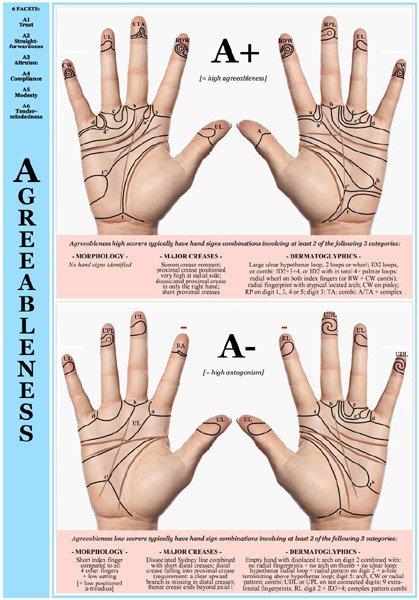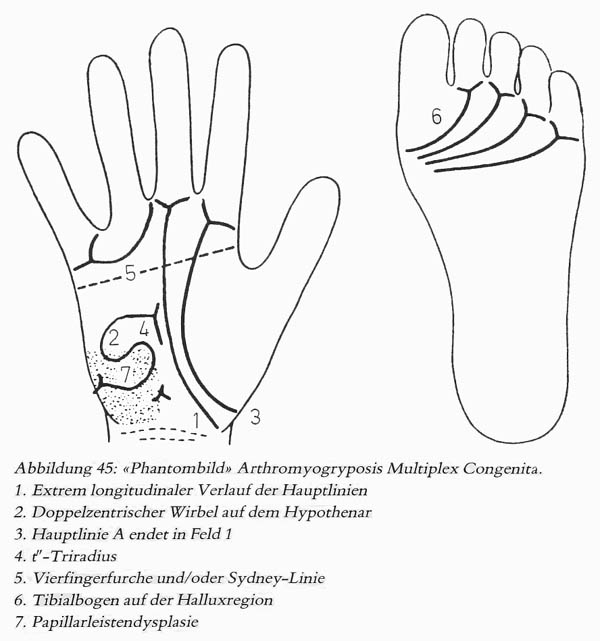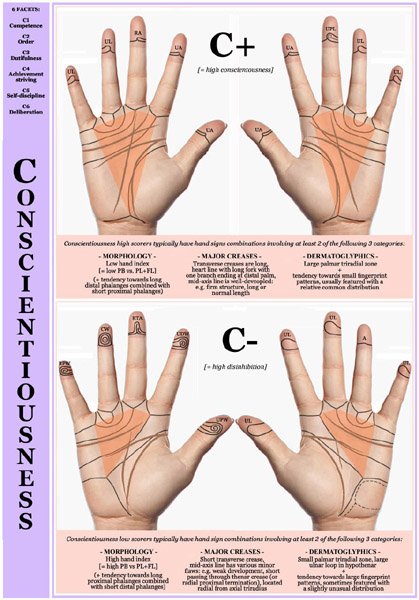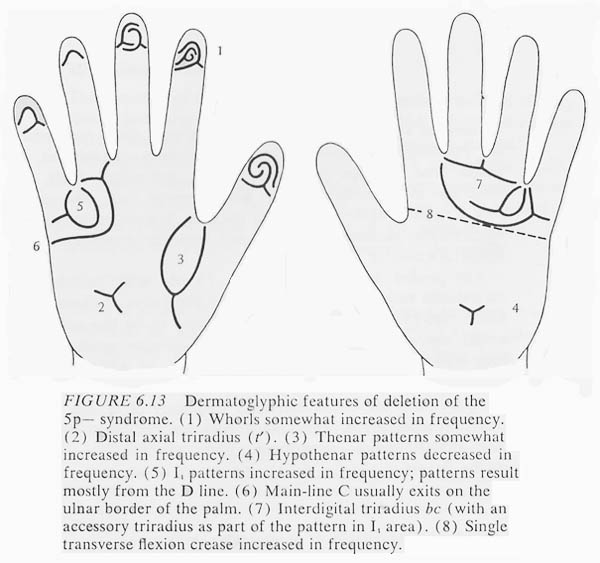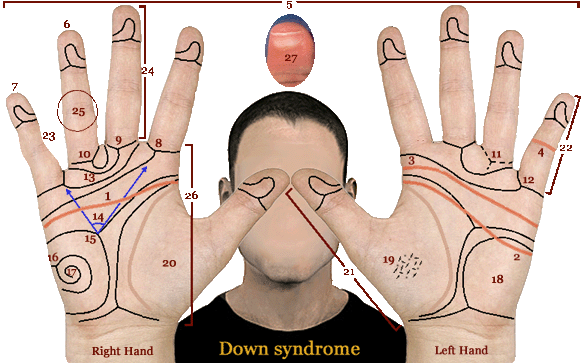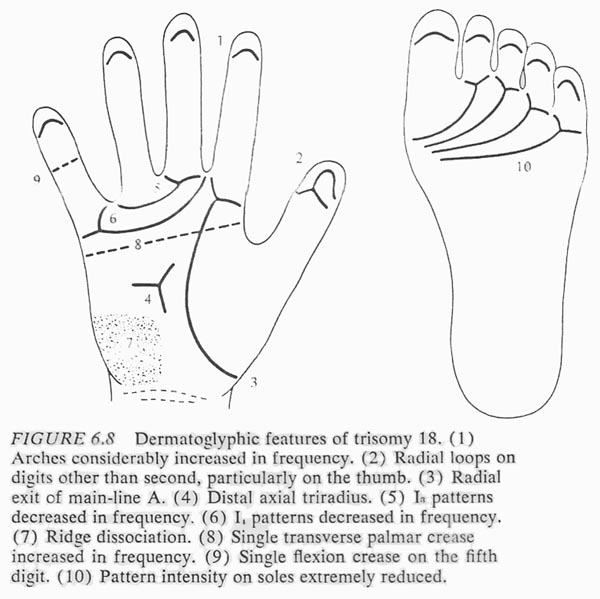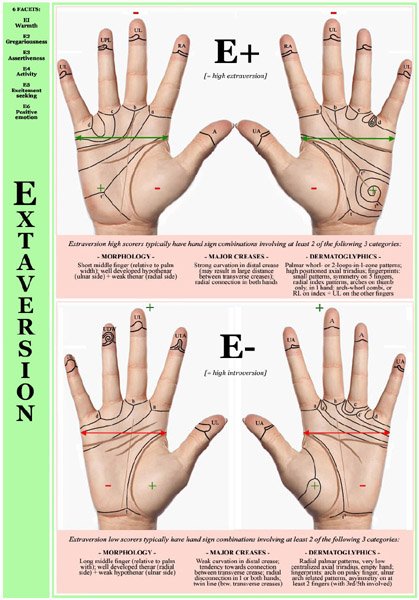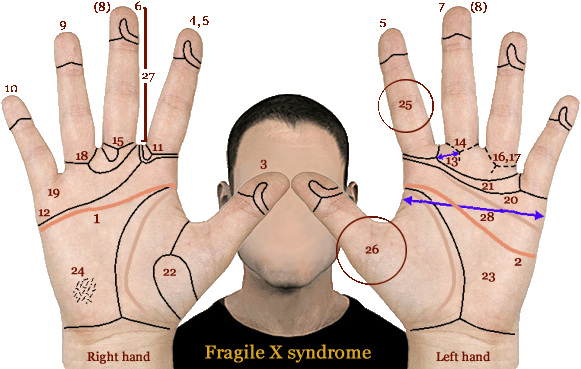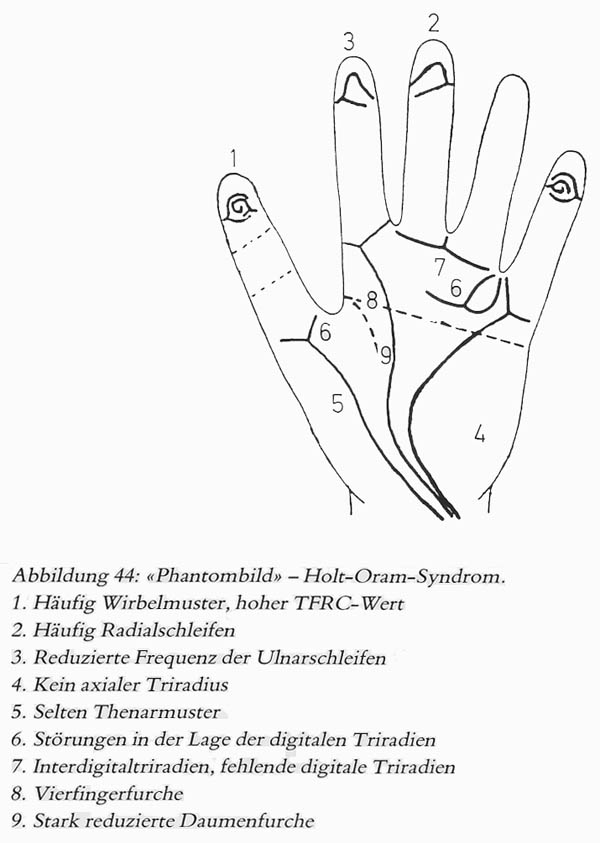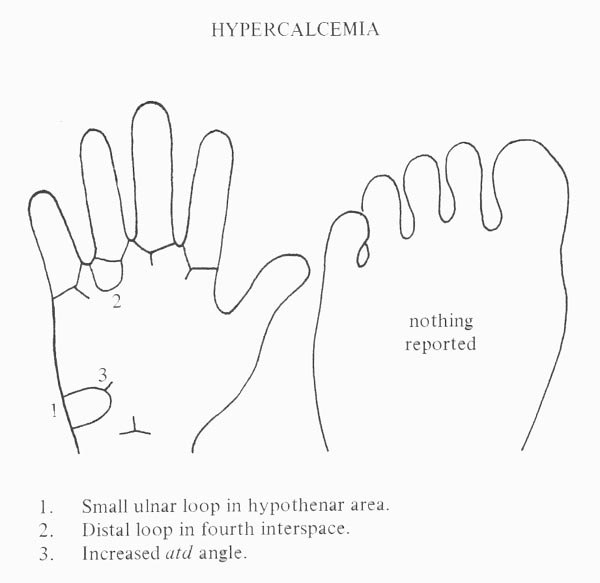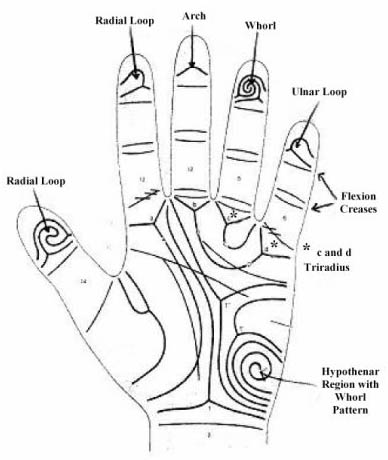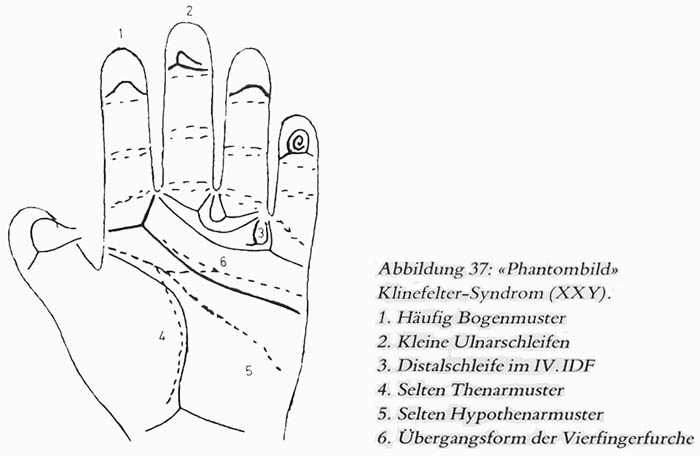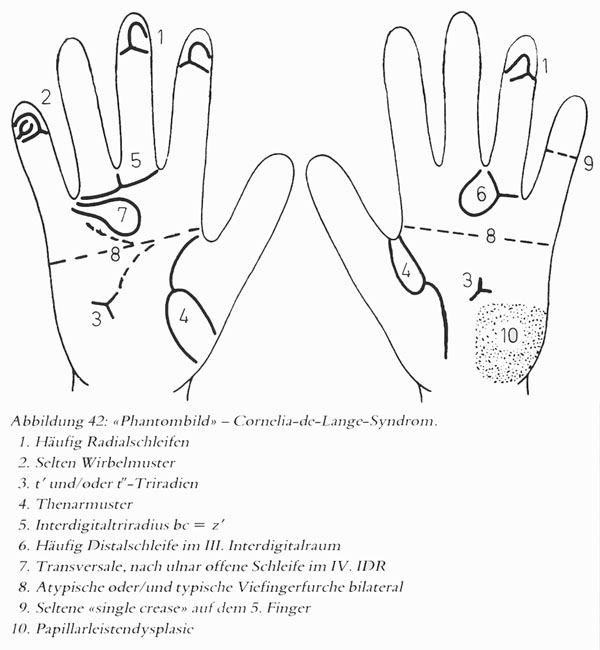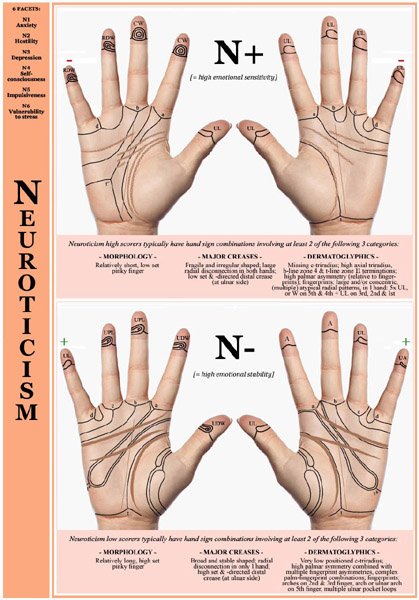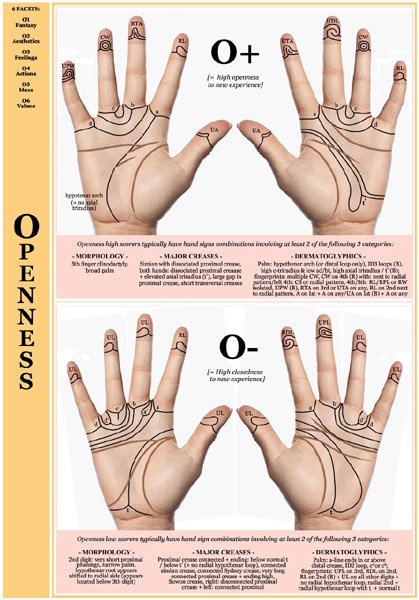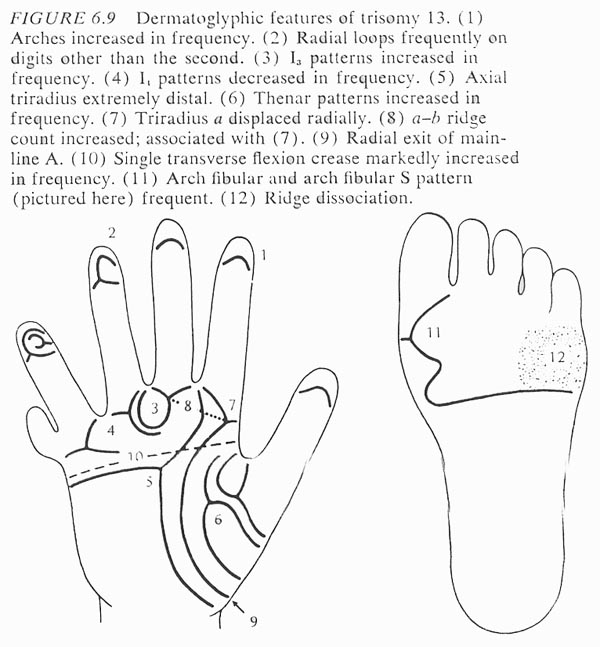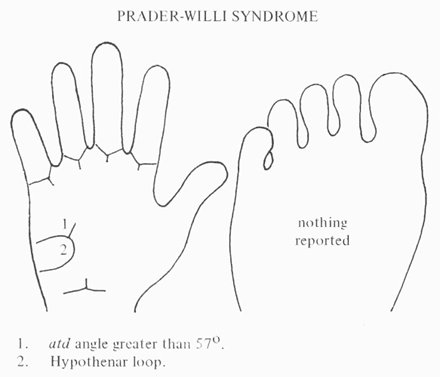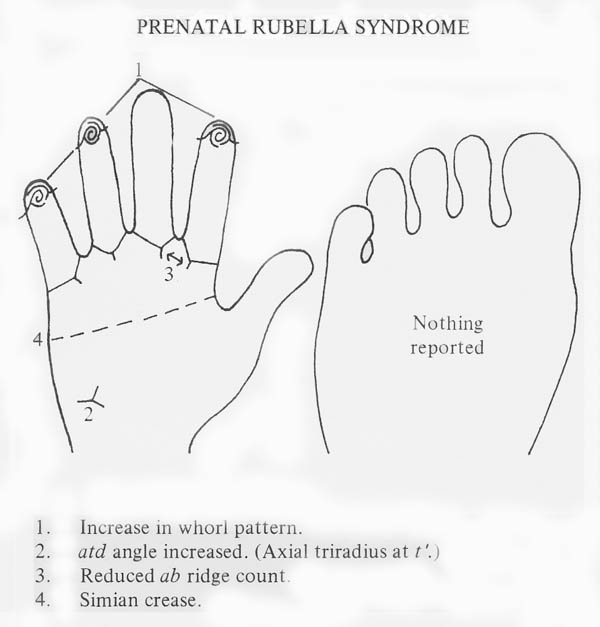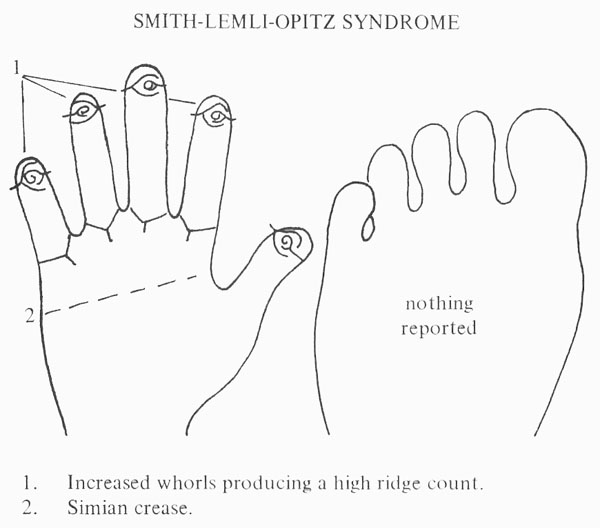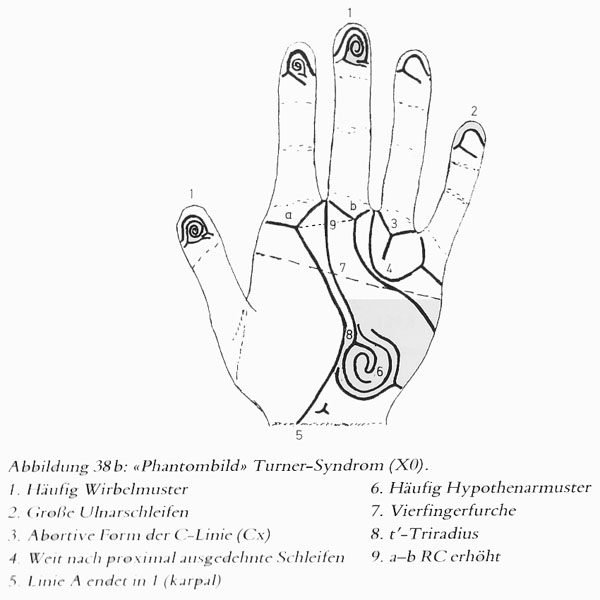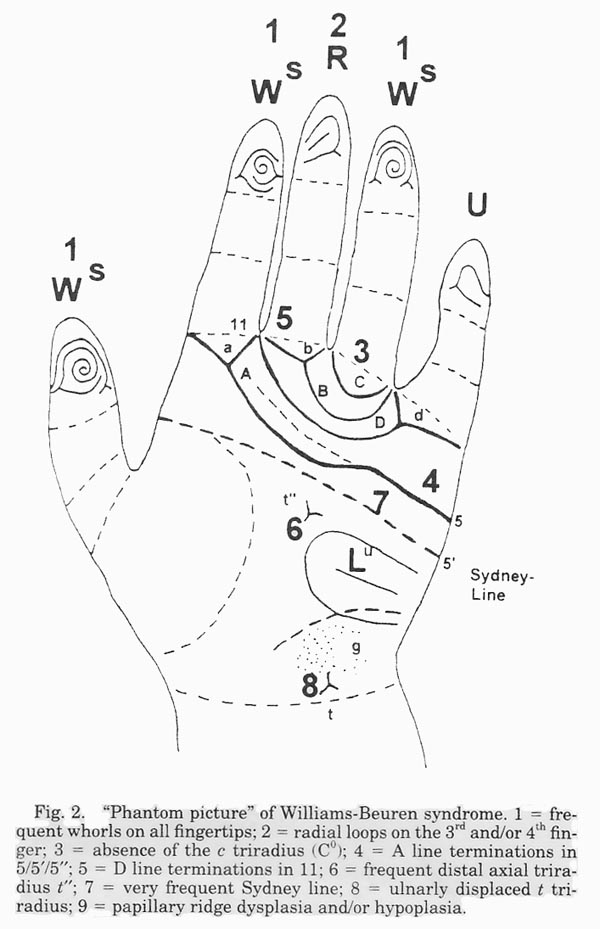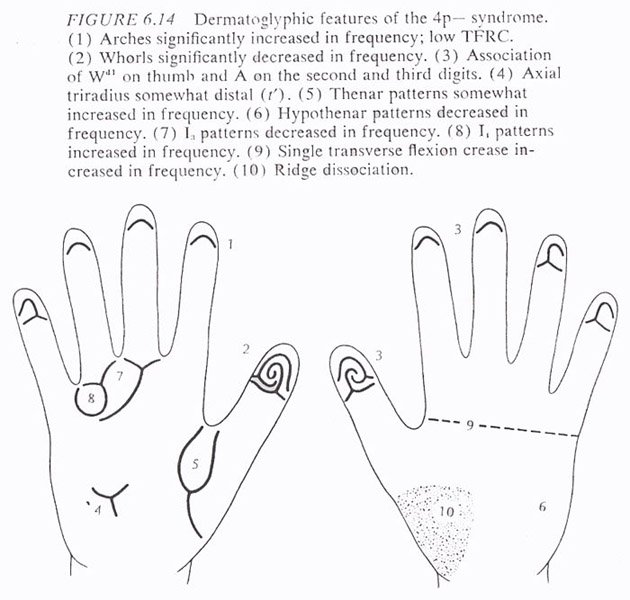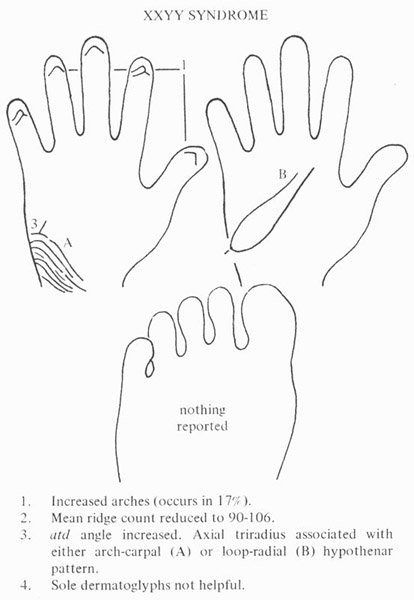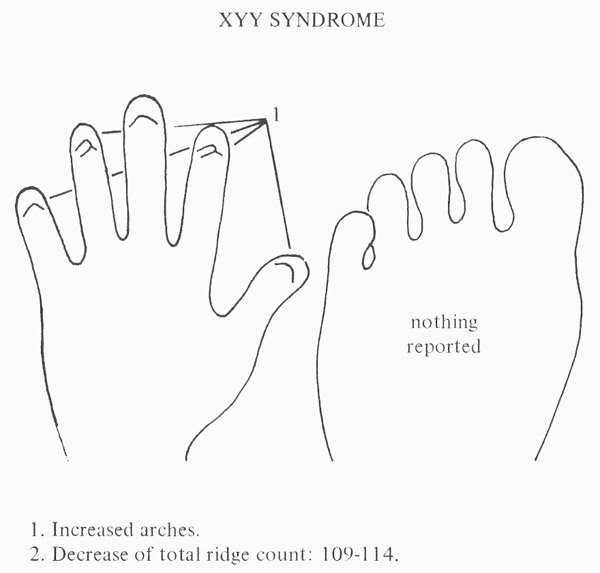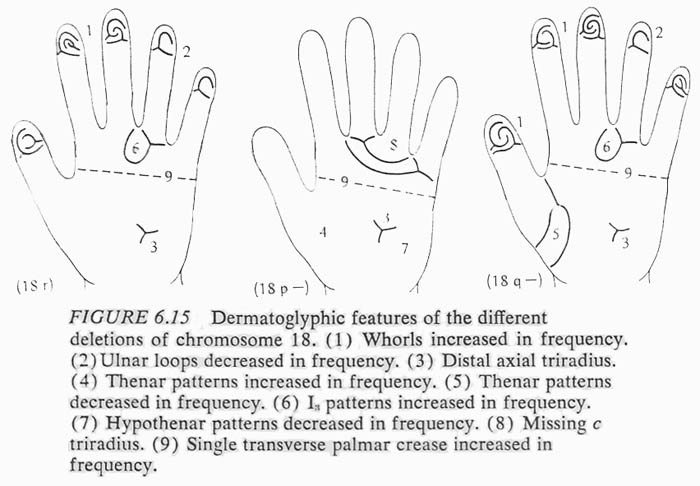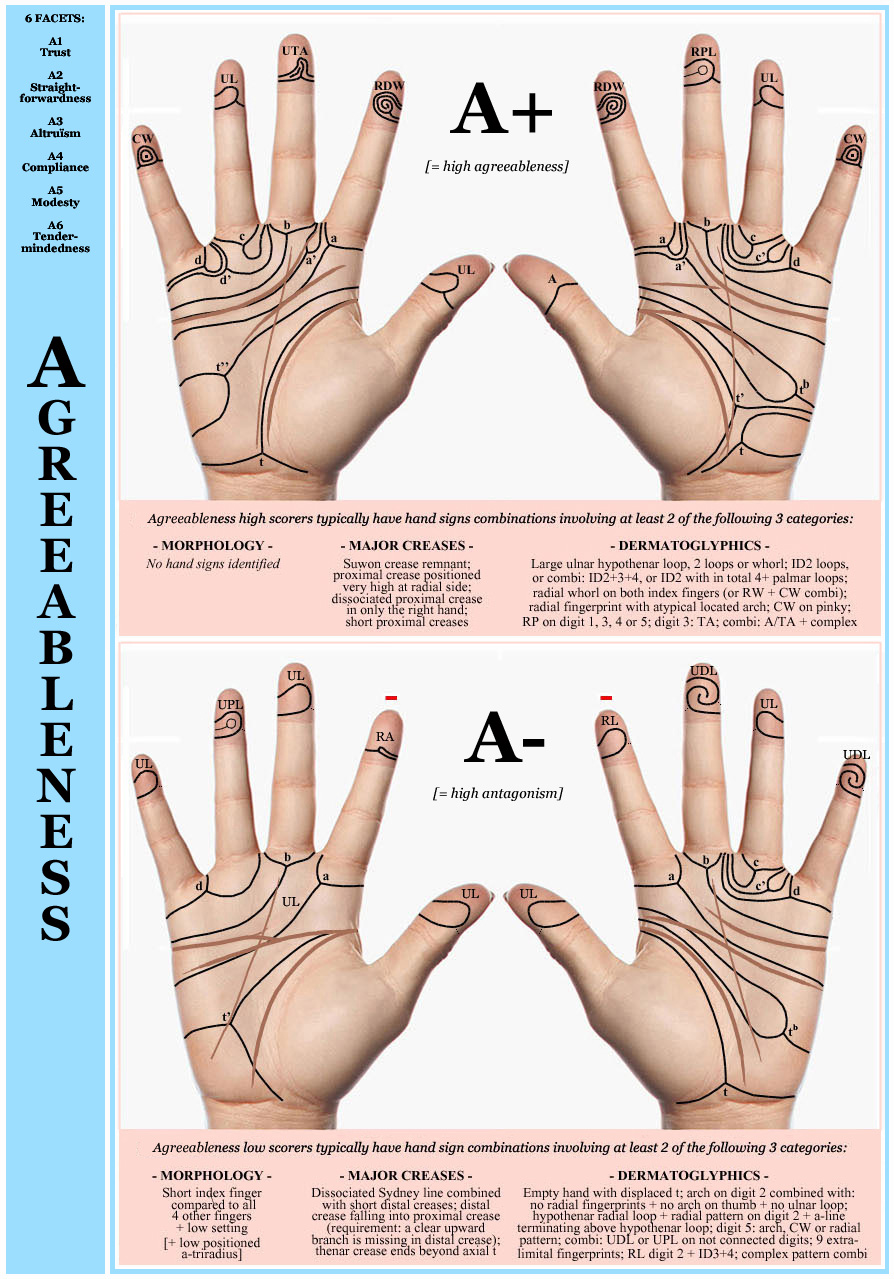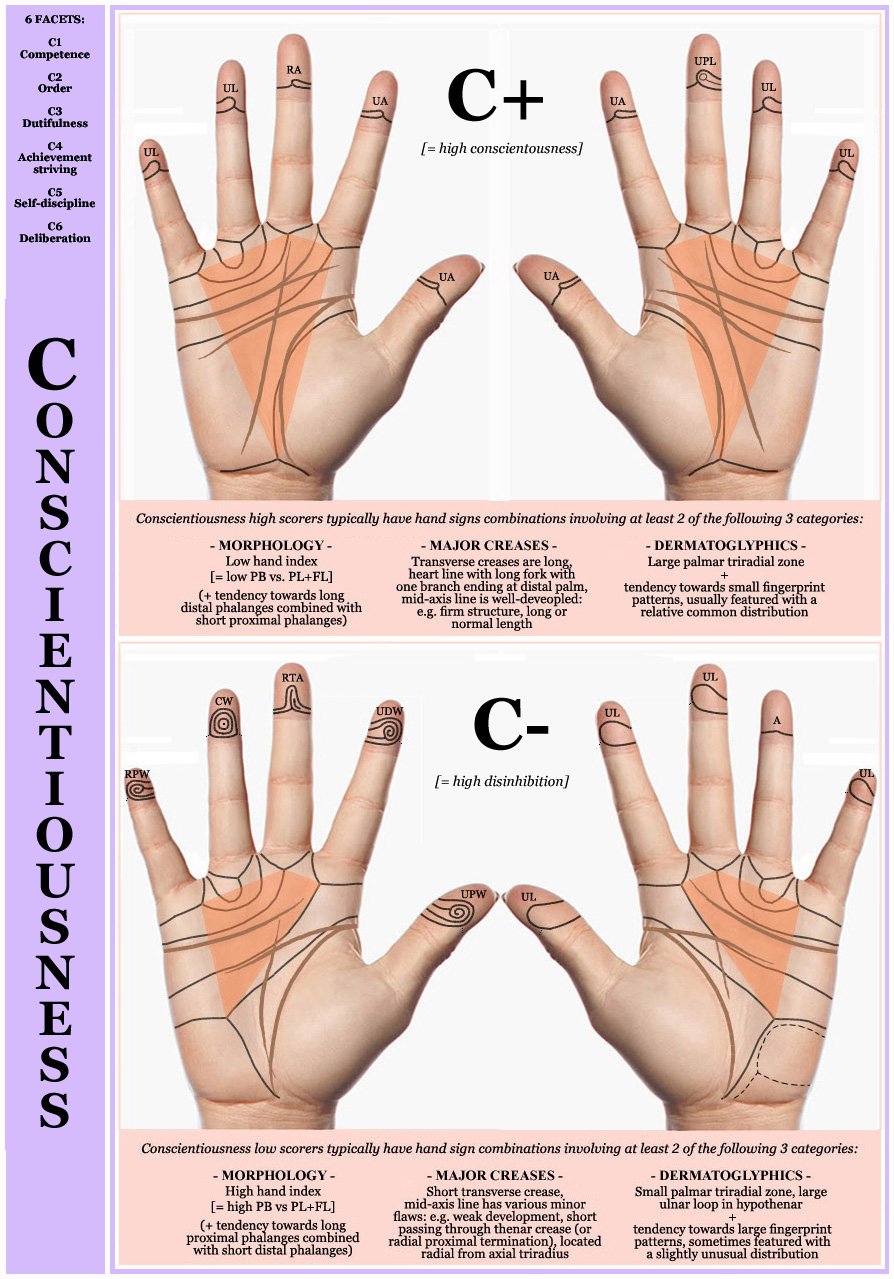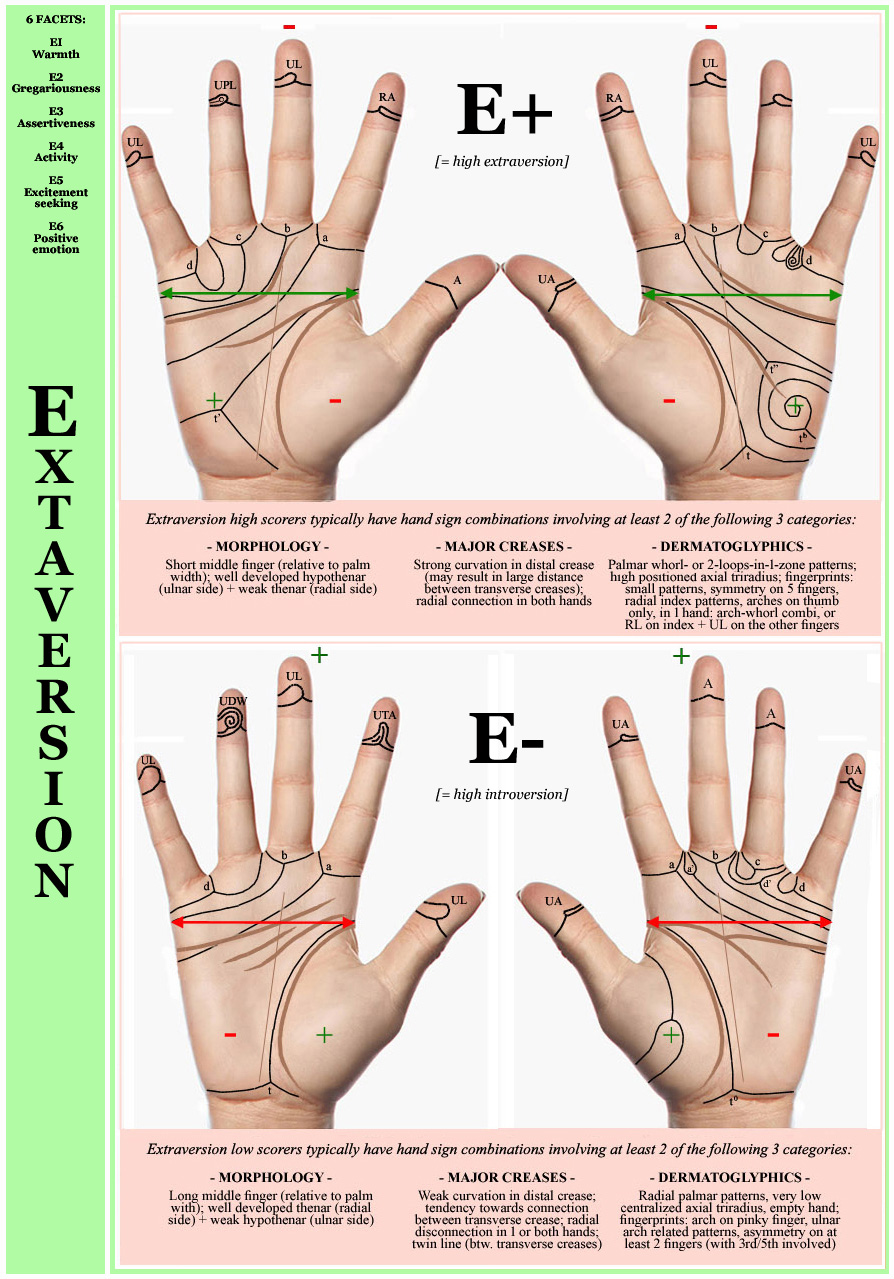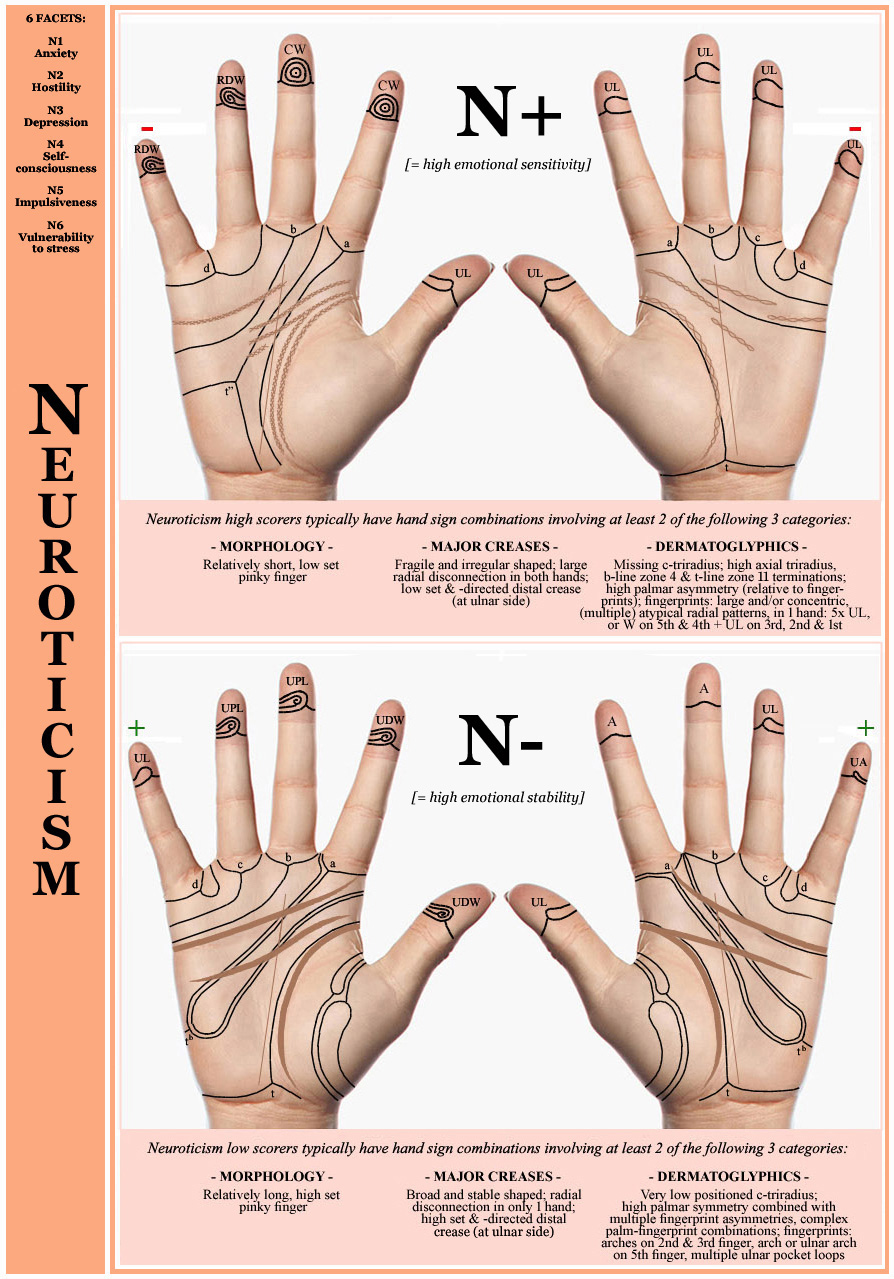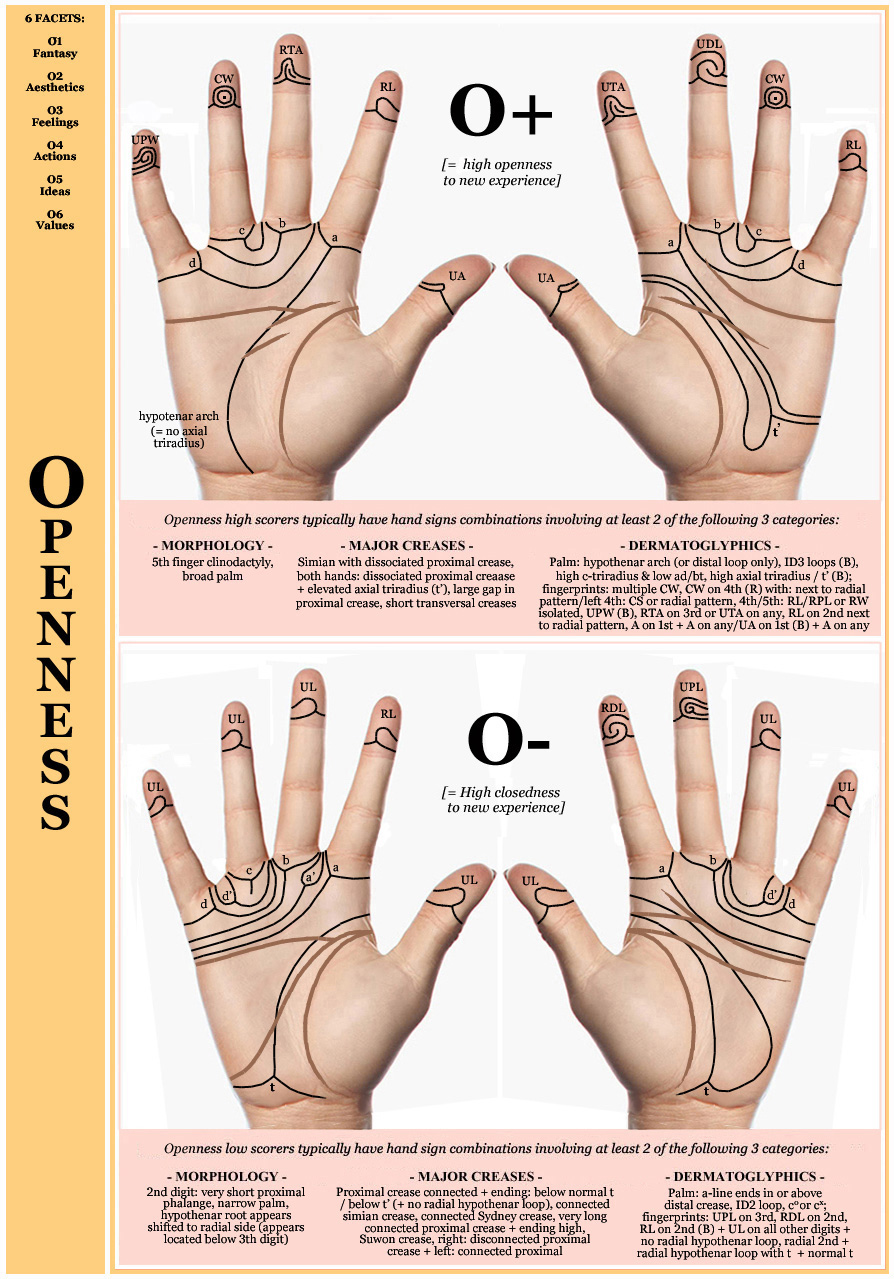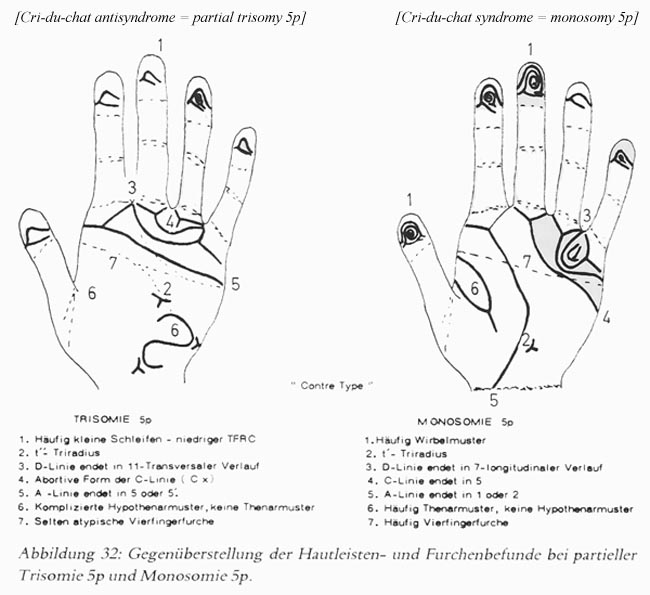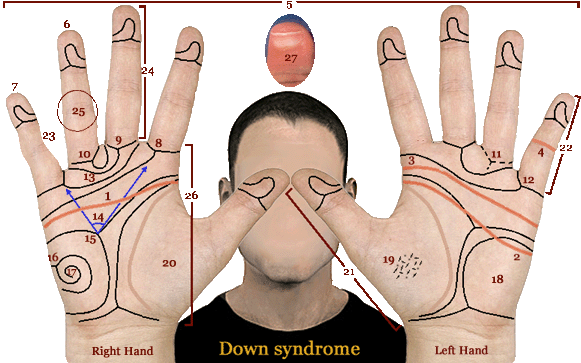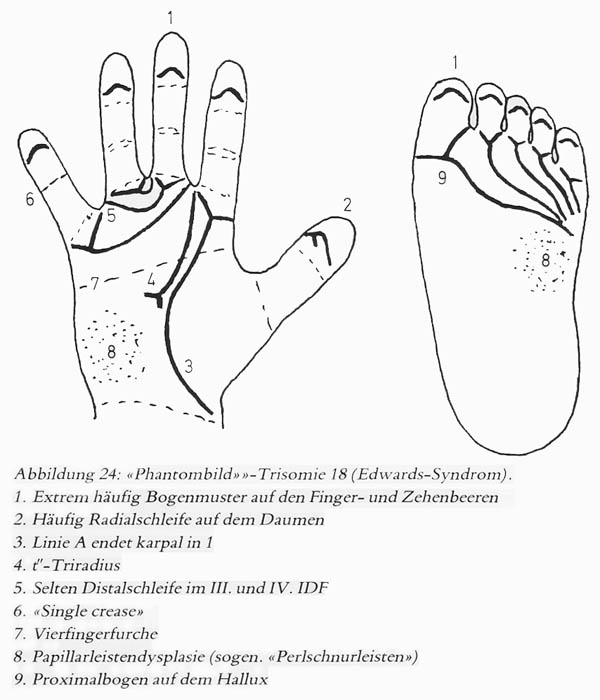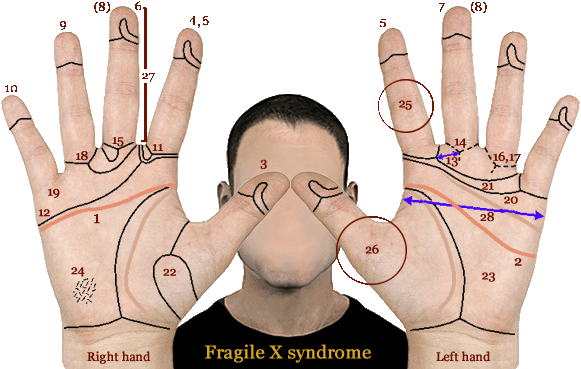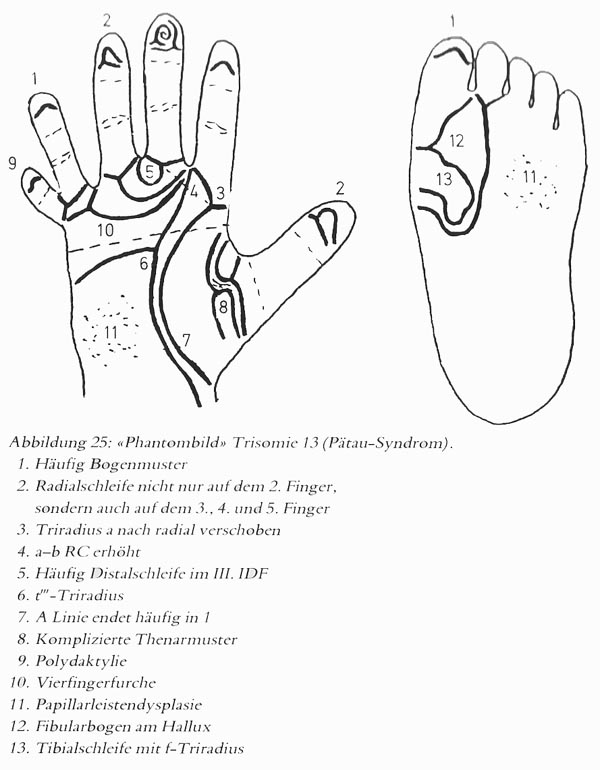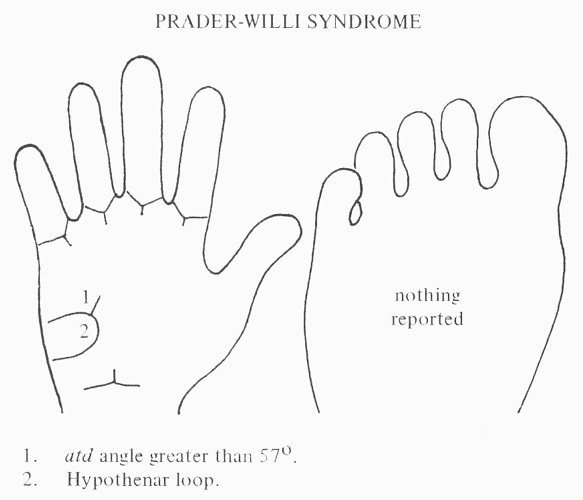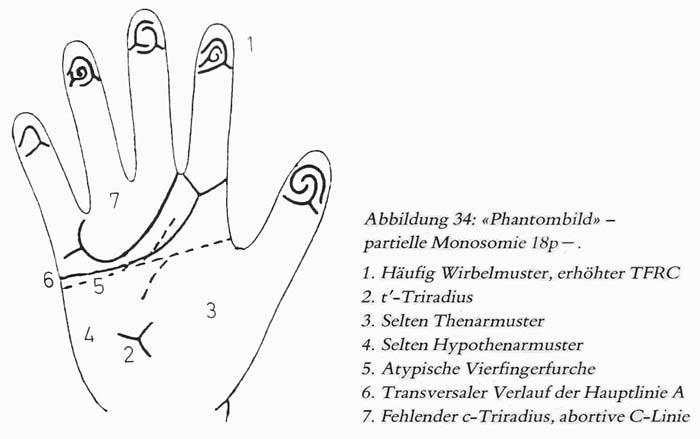
50 Scientific Hand Charts: the collection!
Including a slideshow featured with hand charts for 25 themes
(topics: Big Five personality dimensions, diseases & syndromes)

- SLIDESHOW: 25 Hand Charts! -
(Charts are presented in alphabetic order by topic; all topics are listed below)
Background:
The first milestone in the history of scientific hand charts was established in 1963 when L.S. Penrose published his 'dermatogram', a.k.a. 'phantom picture', for Down syndrome (mongolism) describing stereotype patterns in multiple dimensions of the hand involving dermatoglyphics & creases - see picture on the right below.
Later likewise charts for the hands became available for many other syndromes, sometimes featured with characteristics related to other aspects of the hand morphology (often involving various aspects of the fingers such as: shape, lenght, nails).
The latest development concerns the fact that hand charts derived from scientific research are now also available for characteristic manifestations of normal psychology, involving the Big Five personality dimensions Conscientiousness, Extraversion & Neuroticism - see e.g. the three hand charts displayed at the bottom of this page.
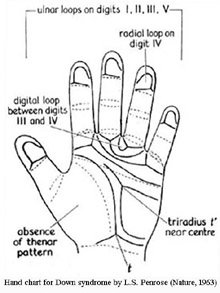
This article presents 3 options to start browsing the hand maps (slideshow + links above and below), which so far include 5 dimensions of Big Five personality model, 1 disease & 23 syndromes.
What do these hand charts tell us?
Interestingly, all available scientific hand charts confirm the significance of the following essential no.1 rule, which describes the fundamental major principle where scientific hand reading begins:
"Any hand sign only bares significance for a specific theme when it's presence is combined with the presence of other hand signs that also bare significance for that same theme."
This no.1 major principle presents the axiom (abstractly defined) which also provides the basis for the scientific hand reading system named Multi-Perspective Hand Reading!
Also, this no.1 rule is presented here as a starting point to browse the available hand charts (25 themes are included), which are presented below by alphabetical order:
Agreeableness | Arthogryposis | Conscientiousness | Cri du chat syndrome | Down syndrome | Edwards syndrome | Extraversion | Fragile-X syndrome | Holt-Oram syndrome | Hypercalcemia | Kabuki syndrome | Klinefelter syndrome | de Lange syndrome | Neuroticism | Openness | Patau syndrome | Prader-Willi syndrome | Rubella syndrome | Smith-Lemli-Opitz syndrome | Turner syndrome | Williams syndrome | Wolf-Hirschhorn syndrome | XXYY syndrome | XYY syndrome | 18 deletion syndrome
A summary of the most significant hand sign combinations is presented for the individual conditions inside the article: Decoding the language of the hand!
NOTICE: Reflexology hand charts are not included because the scientific foundation of any of such charts is actually unknown; nevertheless, you can read more about the fundamentals of such charts HERE.
![]() SCIENTIFIC HAND CHARTS: Introduction
SCIENTIFIC HAND CHARTS: Introduction
Hand charts for Big Five personality dimensions:
• Hand chart(s) for Agreeableness (2x: 1 in 4 people)
• Hand chart(s) for Conscientiousness (2x: 1 in 4 people)
• Hand chart(s) for Extraversion (2x: 1 in 4 people)
• Hand chart(s) Neuroticism (2x: 1 in 4 people)
• Hand chart(s) Openness (2x: 1 in 4 people)
Hand charts for diseases:
• Hand charts for hypercalcemia (1 in 4,000 people)
Hand charts for syndromes:
• Hand charts for arthrogryposis (1 in 10,000 people)
• Hand charts for cri-du-chat syndrome (1 in 30,000 people)
• Hand charts for Down syndrome (1 in 700 live births)
• Hand charts for Edwards syndrome (1 in 6,000 live births)
• Hand charts for fetal alcolhol syndrome (1 in 500 people)
• Hand charts for fragile-X syndrome (1 in 5,000 people)
• Hand charts for Holt-Oram syndrome (1 in 100,000 live b.)
• Hand charts for Kabuki syndrome (1 in 32,000 people)
• Hand charts for Klinefelter syndrome (1 in 1000 males)
• Hand charts for de Lange syndrome (1 in 15,000 live births)
• Hand charts for Marfan syndrome (1 in 5,000 people)
• Hand charts for Patau syndrome (1 in 15,000 live births)
• Hand charts for Prader-Willi syndrome (1 in 15,000 births)
• Hand charts for Rubella syndrome (1 in 100,000 people)
• Hand charts for Rubinstein syndrome (1 in 200,000 births)
• Hand charts for SLOS (1 in 40,000 births)
• Hand charts for Turner syndrome (1 in 2,000 female births)
• Hand charts for Warkany syndrome (1 in 200,000 births)
• Hand charts for Williams syndrome (1 in 14,000 births)
• Hand charts for Wolf-Hirschhorn syndrome (1 in 50,000 b.)
• Hand charts for XXYY syndrome (1 in 30,000 male births)
• Hand charts for XYY syndrome (1 in 1,000 male births)
• Hand charts for 18 deletion syndromes (2 in 40,000 live b.)
NOTICE: Reflexology hand charts are not included in this section because the scientific foundation of any of such charts is actually unknown; nevertheless, you can read more about the fundamentals of such charts HERE.
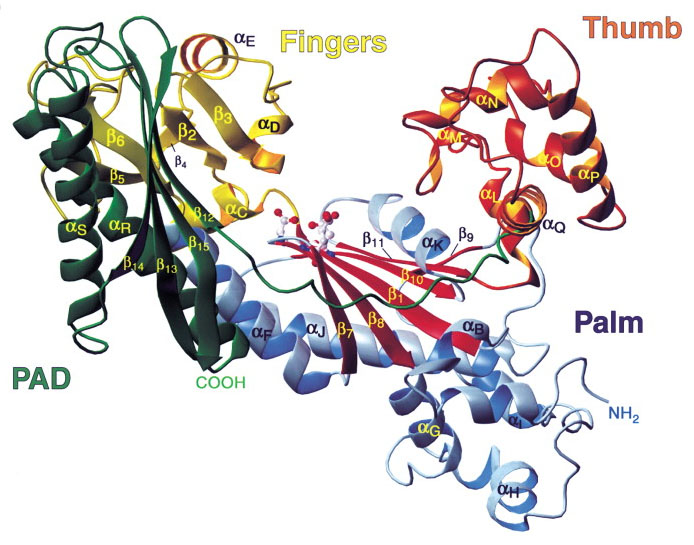
Other charts & maps:
• Fingerprints world map
• Hand reading experts world map
• Hand reflexology charts
